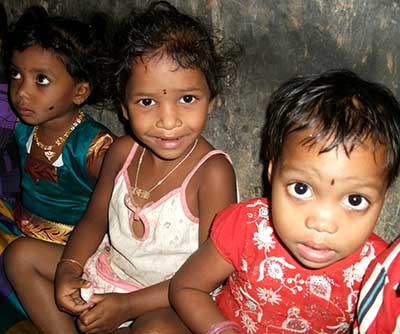 TB in children is commonly neglected. It is difficult to diagnose, so the scale of the problem is often underestimated. Children are also less likely to pose an infection risk to others, so where resources are scarce childhood TB is simply not the priority.
TB in children is commonly neglected. It is difficult to diagnose, so the scale of the problem is often underestimated. Children are also less likely to pose an infection risk to others, so where resources are scarce childhood TB is simply not the priority.
Yet the impact of TB in children is devastating: in 2015 one million children became ill with TB — and 200,000 died from the illness. Children are also more likely to be left severely disabled by TB, as they are more vulnerable to complex forms of the disease such as TB meningitis.
TB affects the youngest and weakest children. Those living with HIV are particularly at risk, as are those suffering from malnutrition, common childhood infections and intestinal worms.
Children are most likely to be infected with TB by their parents and other close relatives. Many families live in overcrowded living conditions, which increases a child’s risk of infection.
The cycle of poverty
The impact of TB on children is far reaching. If the family breadwinner becomes ill with TB, this can drive a family into ever deeper poverty. Children miss out on school as a result of illness or because they have to look after a sick relative or earn money themselves. This perpetuates the cycle of poverty. WHO estimates that 10 million children have been orphaned by TB, making them more likely to live in poverty and die young themselves.
The challenges of tackling TB in children
The tools to prevent, diagnose and treat childhood TB are simply not fit for purpose:
- BCG vaccination: this is not 100% effective or widely available, although it does limit some of the severe forms of tuberculosis which are unique to young children. The BCG is unsuitable for children living with HIV.
- Diagnosis: sputum testing remains the most common form of TB diagnosis. Children are less likely to have a productive cough, or to be able to provide a sample. Even if they do, their samples are less likely to contain visible TB bacteria – even when the bacteria are present in their bodies.
- Treatment: TB treatment is long and arduous, involving numerous medications with many side effects. A child-friendly TB treatment formulation was only introduced to the market in late 2015. Most often, children are forced to take a bitter concoction of crushed-up adult pills. This risks drug refusal and wrong dosing, and therefore the development of drug-resistance.
